 |
| https://s-media-cache-ak0.pinimg.com/originals/08/b5/20/08b520eb483a88a6b046b2daad743635.jpg |
 |
| http://i.livescience.com/images/i/000/014/843/i02/venus-flytrap-ant-110128.jpg?1297863204 |
 |
| http://www.wildlifesouth.com/Locations/NorthCarolina/Images-GreenSwampVenusFlytraps/VenusFlytrap_with_Prey2.jpg |
Venus Flytrap, also known as Dionaea muscipula, it is native to subtropical wetlands/ Boggy areas on the East Coast of United States in North and South Carolina. Venus Flytrap is a carnivorous plant and they get nutrients from gases in the air and from poor soil as well. But because they live in poor soil, they are more healthy by catching insects.Venus Flytrap lives around the world as nowadays, people also grows them in a pot and you can buy them from the plants shops. The photos on below were taken when I was walking at IKEA, I saw the Venus flytrap there and they sold them in a pot.
Color of the Venus Flytraps:
 |
http://littleshopofhorrors.co.uk/image/cache/data/import/prods
/New%20LSOH%201:1/All%20green-500x500.jpg |
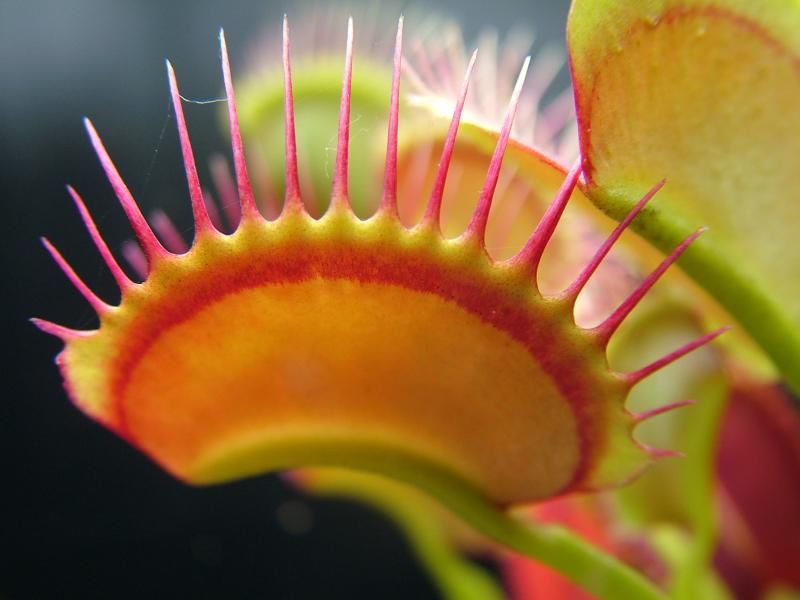 |
http://smg.photobucket.com/user/nokoto/media/Ebay%20Items%20For%
20Sale/VFT/DSCF3057_zps3639d6c6.jpg.html |
 |
| http://www.labonsai.com/wp-content/uploads/2015/06/Carnivorous-VENUS-FLY-TRAP-Plant-Seeds.jpg |
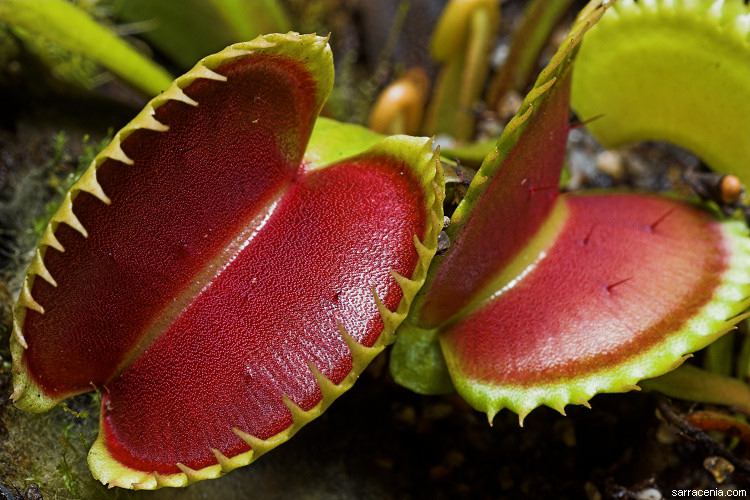 |
| http://www.sarracenia.com/photos/dionaea/dionamusci091.jpg |
The outer surface of the Venus Flytraps are green in color but the color inside the Venus Flytrap sometimes are unpredictable. Sometimes it might be green inside, but it might turn red or reddish pink color depends on the amounts of light. Dark red color cause by a production of the organic red dye anthocyanin and red color might also produced by anthocyanin and it causes the inside surface of the flytraps to turn red including the digestive fluid. The green color is caused by chlorophyll of the leaves of the Flytraps in response to lights. The red color appears when the flytraps live under stronger light and it develops much more slowly than the green color which means that the flytraps are green at the beginning as well. This also means that when the flytraps catch the prey and the trap closes, the red color will stop developing for a certain time until it reopens again to get light. During cold weather, the flytraps are redder than in warm temperature. This also means that during warm weather, because they grows faster, they look more green and the red color takes longer time to develop. But in winter, the older leaves have been exposed under lights for a long period of time and they develop the red color. The red color of the inner surface of the flytraps will also fade as well depends on how much light it received.
On below I have found a real case of the fading color of the flytraps. The photos show the fading red color inside the flytraps and you can see two weeks ago, the color is in dark red, but two weeks later, it turns into pinkish red color. This cause depends on the exposure of light that the flytraps received over time.
Two weeks later:
 |
| http://www.flytrapcare.com/phpBB3/so-what-actually-causes-trap-color-t4984.html |
|
Two weeks ago:
 |
| http://www.flytrapcare.com/phpBB3/so-what-actually-causes-trap-color-t4984.html |
|
How Venus Flytrap attract insects?
In order to attract and catch insects, sometimes animals, Venus Flytraps secrete nectar on the inner surface of the flytraps. It will then attract the insects which are searching for food.
The Structure of the Venus Flytrap:
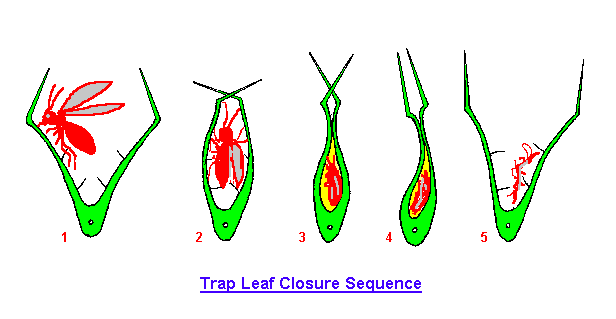 |
http://www.honda-e.com/IPW_4_Illustrations/PHOTO_JPEG/A4-02.5.gif
On this photo, it shows the process of how the flytrap catches an insect |
 |
http://www.flytrapcare.com/phpBB3/learn-the-vft-parts-get-familiarize-with-the-names-t11826.html
Close up of the Digestive enzymes of the Venus Flytrap |
In order to trap the prey, Flytraps leave their leaves wide open and when something touches and contacts the trigger hairs in their inner surfaces and make them bend, the lobes will shut and trap the things inside the lobes. The trap takes in less than a second but it doesn't close tightly at the beginning as it allows small insects to escape from the trap. Small insects wouldn't provide enough food for the flytrap and I think they are really clever as they only choose to eat big insects. After the flytraps catch the prey, it shut tightly and the lobes produce digestive fluids and an antiseptic juices which are used to keep the insects inside the lobe from decaying. The digestive fluids dissolves the inner parts of the insect but not the outer part. It takes around five to twelve days till the end of the digestive process (depends on the temperature, age of the flytrap, the number of times the flytrap catches the prey and the size of the insect) and this time, the flytrap will then reabsorbs the digestive fluid and reopen again. Only the exoskeleton (the outer part of the insect) left on the trap but it will be washed away by rain or blow away by the wind. If the insect is too big for the flytrap to close, the insect will stick out and this let the molds and bacteria on the insect to thrive, but the flytrap will turn black in color, decay and even falls off. The reason why only when something touches the trigger hairs of the flytrap, it will then close and catch the prey is because it helps the flytraps to serve as a safeguard against a waste of energy when trapping something without nutritional value. An interesting fact that in order to allow the flytrap to grow, the trigger hairs must be touched several times and this lets the plant knows the trap is still alive.
On below shows the trigger hairs inside the lobe of the flytrap.
 |
| http://venusflytrap.info/wp-content/uploads/2014/10/dionaea-trigger-hairs.jpg |
 |
| http://www.honda-e.com/IPW_4_Illustrations/PHOTO_JPEG/A4-01.8.gif |
 |
| http://www.puchen.org/gardens/Conservatory/bog/v1.jpg |
The Venus Flytraps reproduces through its rhizome and it will never have more than seven leaves as if it does, it may means that it has already split off another plant from the mother plant.
Features of the Venus flytraps:
- The Cilia, also known as Guard Hair, is used to trap and keep the insects inside the lobes without letting large insects to escape.
- On each inner surface of the lobes, there are three trigger hairs.
- Venus Flytraps grow in a rosette and there are leaves growing from the center and outward in different directions as well.
- The Spine is the backbone of the flytrap
 |
| http://www.flytrapcare.com/phpBB3/learn-the-vft-parts-get-familiarize-with-the-names-t11826.html |
Petiole is the part where it helps to connect the leaf blade to the lobes of the flytrap.
 |
| http://www.flytrapcare.com/phpBB3/learn-the-vft-parts-get-familiarize-with-the-names-t11826.html |
Photosynthesis Process
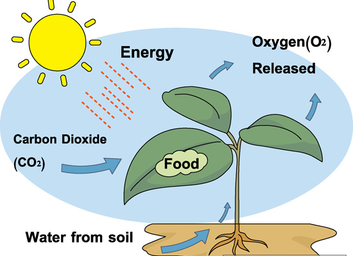 |
| http://biobungalow.weebly.com/uploads/5/3/6/1/53613745/338081881.png?353 |
After the flytrap's seed germinates, the seedling will then grow at the soil's surface. It appears in a thin, short root and two or three tiny lobes. After a few lobes grow, the plants started to grow downward into the soil before it grows upward from the surface of the soil into the light. Photosynthesis process is used where light is used to create food and help them store at the base of the ground and they need a lot of light. Venus Flytrap never really dormant even in winter as it will still grow slowly. Water is also needed in the Photosynthesis process as water enter the plant's stem and pass to the leaves. When the water evaporates in the leaves, the plant exchanges the water for carbon dioxide.
In winter, Venus Flytrap leaves grow short and they stay closely to the soil surface. This happens because it helps to keep the warmth which means that the heat surrounded from the soil and it cools more slowly than the air above its surface. Although the air is cold in winter, the temperature from the ground is warmer and so the Venus Flytraps continue to photosynthesize. But if the weather stay cold for a long period of time, the Flytraps leaves above the ground might dies as well. During late Spring to mid fall, the Flytraps leaves will grow upright and thinner than winter. The upright position helps to expose the leaves and absorb the light and it might helps to attract the preys.
 |
| http://venusflytrap.info/wp-content/uploads/2014/10/venus-fly-traps-in-flower.jpg |
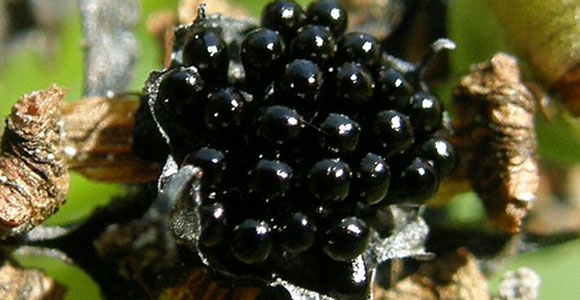 |
| http://www.bugbitingplants.com/images/venus-flytrap-seed-large.jpg |
When the flytraps plants are mature, it produces flowers above the flytraps on a talk stalk and the flowers are grown much more higher than the flutraps. This allows the insects pollinating the flowers without getting trapped in the flytraps. The flowers uses much of the stored food in the Venus Flytrap's rhizome and after they pollinated by the insects, it produces small shiny black seeds and it falls to the ground during summer and germinates within 10 to 25 days.
Roots:
 |
| http://i.imgur.com/QsqNu.jpg |
The flytraps roots are long and dark brown/black in color. The rhizome is the white and yellowish part above the roots and it is buried on the ground. It is strong and is the place where the petiole starts. Flytrap's roots are very sensitive to soil and water and it is used to absorb minerals and water.
References:
- http://homeguides.sfgate.com/kind-structure-venus-flytrap-have-77337.html
- http://botany.org/bsa/misc/carn.html
- http://littleshopofhorrors.co.uk/venus-fly-trap.html
- http://venusflytrap.info/grow-venus-fly-trap/
- http://www.flytrapcare.com/phpBB3/learn-the-vft-parts-get-familiarize-with-the-names-t11826.html
- http://www.livescience.com/15910-venus-flytrap-carnivorous.html
- http://venusflytrap.info/faq-questions-about-venus-fly-trap/
- http://www.flytrapcare.com/phpBB3/so-what-actually-causes-trap-color-t4984.html
- http://science.howstuffworks.com/life/botany/venus-flytrap3.htm
- http://homeguides.sfgate.com/venus-flytrap-trap-flies-74657.html






















No comments:
Post a Comment